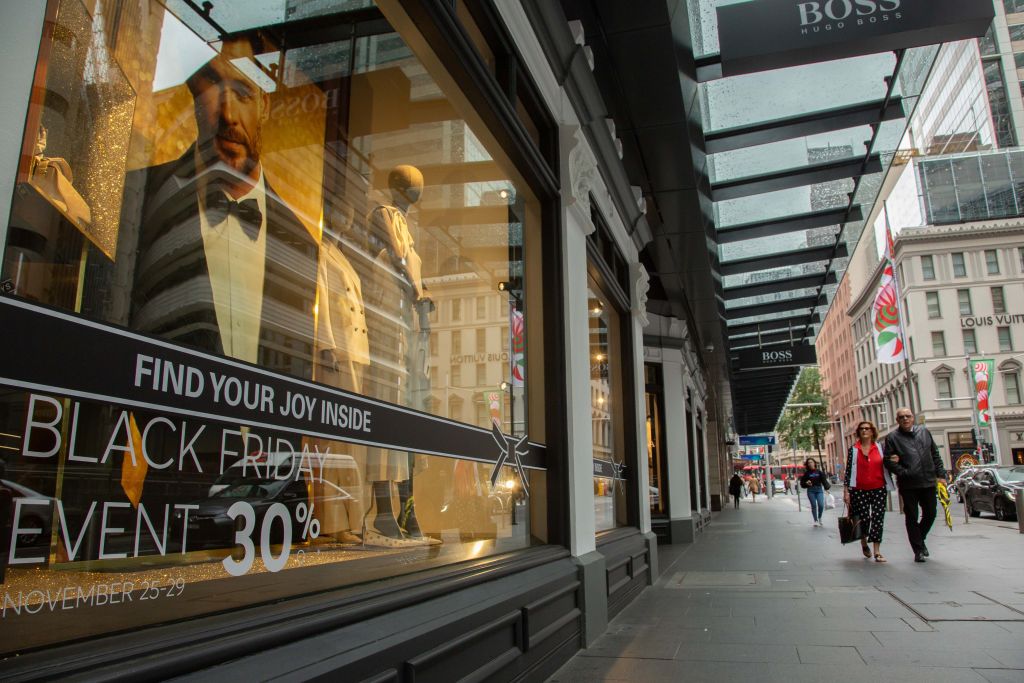Spending is down for some Australians, but one group continues to thrive
As cost of living pressures bite, retailers are taking bold steps to draw out cautious buyers
Spending continues to trail inflation as Australians head into the final quarter of the year, new data from the Commonwealth Bank has revealed.
The CommBank iQ Cost of Living Insights report showed the amount of money being spent on essentials halved in the past year, down to 1.7 percent, driven by a fall in petrol prices, down 6 percent, and lower spending on utilities, down 3 percent.
However, there is a marked difference across age groups, with Australians between 18 and 29 years cutting back on spending more than any other age group, down 2 percent over the past year. At the other end of the scale, Australians aged between 60 and 69 years increased spending over the same period, up 3.9 percent, while spending among those over 70 rose 7.7 percent.
Wade Tubman, CommBank iQ Head of Innovation and Analytics said it was further evidence of the widening generational gap when it comes to cost of living pressures.
“Lower petrol prices and government energy relief programs have eased the pressure on essential spending and July’s income tax cuts have increased take home pay for many Australians, however there continues to be a discrepancy between the spending power of older and younger Australians,” he said. “In fact, we’ve seen those all the way up to 40 years-old cut back on spending, highlighting the large swathe of the population feeling cost of living pressure.”
The report also showed that spending had risen in some areas, with value and convenience identified as key drivers. The ‘General Retail’ category saw a 5 percent increase in spending, with online marketplace sale increasing by 20 percent, food delivery up by 6 percent and streaming services experiencing a 13 percent rise.
The news comes as Australian retailers embrace the US-style Black Friday sales. Traditionally held the day after US Thanksgiving — November 29 this year — a number of leading retailers offering ‘early’ sales deals to draw in budget conscious shoppers ahead of the Christmas season. Amazon is among those who officially kicked off their sales period today.
Choice reported the Black Friday four-day period accounted for $8.7 billion in spending last year, based on NAB data, up from $7.1 billion in 2022. Data from the Australian Bureau of Statistics showed last year’s spend in that period overtook the December period, indicating Australians are bringing their Christmas spending forward.
Records keep falling in 2025 as harbourfront, beachfront and blue-chip estates crowd the top of the market.
A divide has opened in the tech job market between those with artificial-intelligence skills and everyone else.
JPMorgan Chase has a ‘strong bias’ against adding staff, while Walmart is keeping its head count flat. Major employers are in a new, ultra lean era.
It’s the corporate gamble of the moment: Can you run a company, increasing sales and juicing profits, without adding people?
American employers are increasingly making the calculation that they can keep the size of their teams flat—or shrink through layoffs—without harming their businesses.
Part of that thinking is the belief that artificial intelligence will be used to pick up some of the slack and automate more processes. Companies are also hesitant to make any moves in an economy many still describe as uncertain.
JPMorgan Chase’s chief financial officer told investors recently that the bank now has a “very strong bias against having the reflective response” to hire more people for any given need. Aerospace and defense company RTX boasted last week that its sales rose even without adding employees.
Goldman Sachs , meanwhile, sent a memo to staffers this month saying the firm “will constrain head count growth through the end of the year” and reduce roles that could be more efficient with AI. Walmart , the nation’s largest private employer, also said it plans to keep its head count roughly flat over the next three years, even as its sales grow.
“If people are getting more productive, you don’t need to hire more people,” Brian Chesky , Airbnb’s chief executive, said in an interview. “I see a lot of companies pre-emptively holding the line, forecasting and hoping that they can have smaller workforces.”
Airbnb employs around 7,000 people, and Chesky says he doesn’t expect that number to grow much over the next year. With the help of AI, he said he hopes that “the team we already have can get considerably more work done.”
Many companies seem intent on embracing a new, ultralean model of staffing, one where more roles are kept unfilled and hiring is treated as a last resort. At Intuit , every time a job comes open, managers are pushed to justify why they need to backfill it, said Sandeep Aujla , the company’s chief financial officer. The new rigor around hiring helps combat corporate bloat.
“That typical behavior that settles in—and we’re all guilty of it—is, historically, if someone leaves, if Jane Doe leaves, I’ve got to backfill Jane,” Aujla said in an interview. Now, when someone quits, the company asks: “Is there an opportunity for us to rethink how we staff?”
Intuit has chosen not to replace certain roles in its finance, legal and customer-support functions, he said. In its last fiscal year, the company’s revenue rose 16% even as its head count stayed flat, and it is planning only modest hiring in the current year.
The desire to avoid hiring or filling jobs reflects a growing push among executives to see a return on their AI spending. On earnings calls, mentions of ROI and AI investments are increasing, according to an analysis by AlphaSense, reflecting heightened interest from analysts and investors that companies make good on the millions they are pouring into AI.
Many executives hope that software coding assistants and armies of digital agents will keep improving—even if the current results still at times leave something to be desired.
The widespread caution in hiring now is frustrating job seekers and leading many employees within organizations to feel stuck in place, unable to ascend or take on new roles, workers and bosses say.
Inside many large companies, HR chiefs also say it is becoming increasingly difficult to predict just how many employees will be needed as technology takes on more of the work.
Some employers seem to think that fewer employees will actually improve operations.
Meta Platforms this past week said it is cutting 600 jobs in its AI division, a move some leaders hailed as a way to cut down on bureaucracy.
“By reducing the size of our team, fewer conversations will be required to make a decision, and each person will be more load-bearing and have more scope and impact,” Alexandr Wang , Meta’s chief AI officer, wrote in a memo to staff seen by The Wall Street Journal.
Though layoffs haven’t been widespread through the economy, some companies are making cuts. Target on Thursday said it would cut about 1,000 corporate employees, and close another 800 open positions, totaling around 8% of its corporate workforce. Michael Fiddelke , Target’s incoming CEO, said in a memo sent to staff that too “many layers and overlapping work have slowed decisions, making it harder to bring ideas to life.”
A range of other employers, from the electric-truck maker Rivian to cable and broadband provider Charter Communications , have announced their own staff cuts in recent weeks, too.
Operating with fewer people can still pose risks for companies by straining existing staffers or hurting efforts to develop future leaders, executives and economists say. “It’s a bit of a double-edged sword,” said Matthew Martin , senior U.S. economist at Oxford Economics. “You want to keep your head count costs down now—but you also have to have an eye on the future.”
With two waterfronts, bushland surrounds and a $35 million price tag, this Belongil Beach retreat could become Byron’s most expensive home ever.
ABC Bullion has launched a pioneering investment product that allows Australians to draw regular cashflow from their precious metal holdings.




















